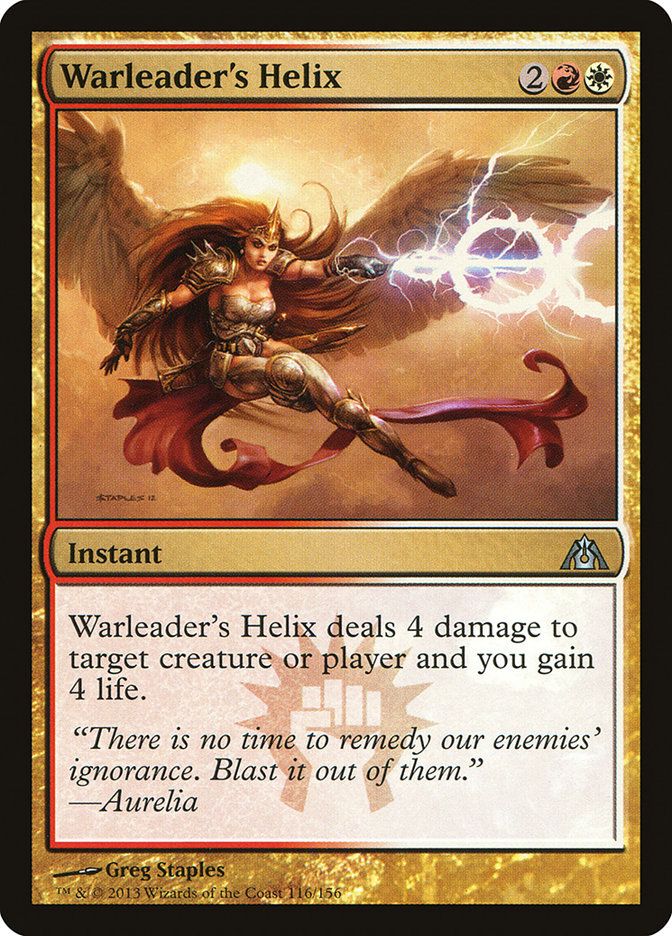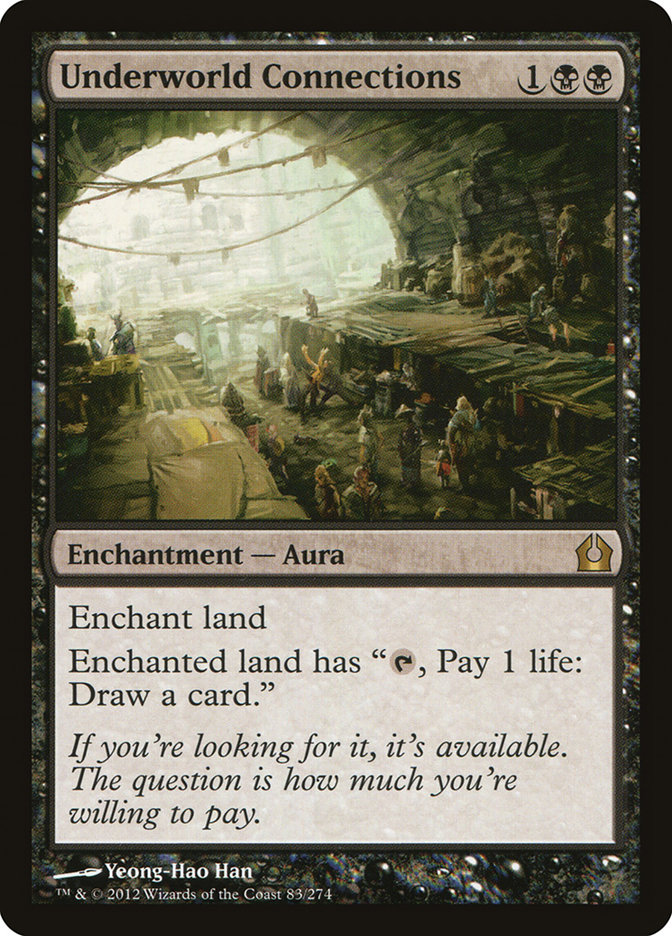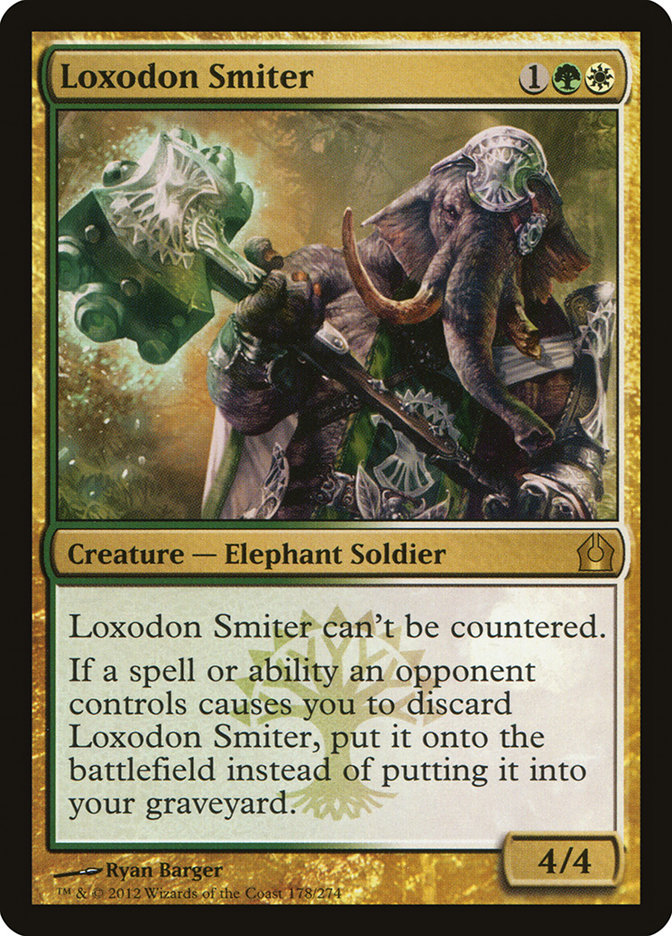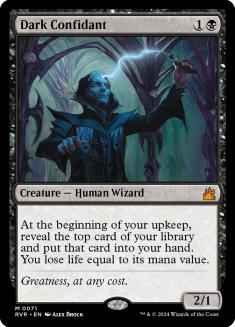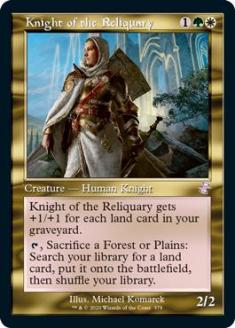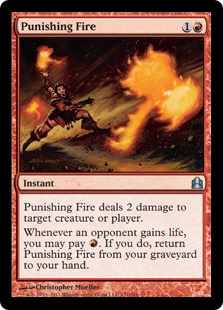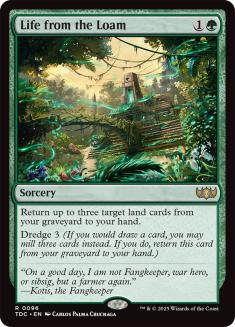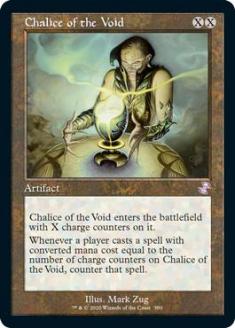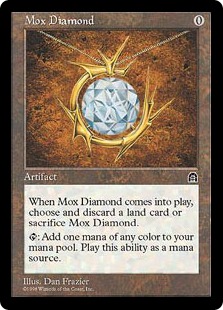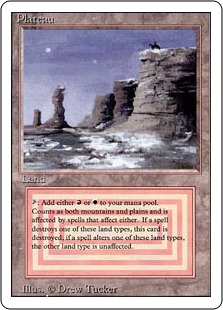I don’t recall the exact details, but somehow I ended up registering a deck I’d never played a game with.
Creatures (22)
- 2 Skirsdag High Priest
- 4 Doomed Traveler
- 4 Falkenrath Aristocrat
- 4 Blood Artist
- 4 Cartel Aristocrat
- 4 Boros Reckoner
Planeswalkers (2)
Lands (23)
Spells (13)

As you can see from the info surrounding the decklist, my 7-3 record put me in the Top 64 of the StarCityGames.com Standard Open in Columbus. My losses came mostly at the hand of flooding out, but Osyp had a fine rebuttal to that.
@G3RRYT after playing that deck a lot, I've discovered it's great at providing you excuses as to why you didn't win with it
— Osyp Lebedowicz (@OsypL) June 16, 2013
A Faithless Looting or two might help alleviate some of that in theory, but it probably wouldn’t work in practice. Without an abundance of graveyard interaction, you’d end up spending a card and valuable time attempting to sift through some bad draws.
Falkenrath Aristocrat underperformed, but that was mostly because when I flooded she didn’t have much to protect her. Obzedat, on the other hand, was a gigantic house, and he/they won me games when I flooded that no other card could have.
Skirsdag High Priest was hit or miss. In Junk Aristocrats, Skirsdag is an automatic four-of because of the plethora of cheap creatures and sacrifice outlets. In Act 2, most of those things are present but not in high numbers. Sometimes it’s good, but most of the time it’s bad. I could see cutting it going further if there were another good, cheap creature.
Orzhov Charm could have been Dreadbore, but I faced zero planeswalkers that I wanted to kill. I did return a Doomed Traveler with the Charm, so there’s that. Going forward, I’m pretty sure that it should be Dreadbore.
The only real change I’d want to make would be swapping a Dragonskull Summit for a Clifftop Retreat. Sixteen black sources aren’t necessary, whereas I definitely could have used a sixteenth white source. The opening hands with all B/R duals forced me to mulligan—or worse yet tempted me into keeping.
The sideboard was pretty nice too. Profit // Loss could have been Electrickery, but other than that I was satisfied. Mark of Mutiny was fantastic against value creatures like Thragtusk and Angel of Serenity, enough so that I considered playing them maindeck alongside some Bloodthrone Vampires.
Warleader’s Helix is, as I noted last week, a very underplayed card. I wanted another life gain effect against R/G Aggro since, ya know, I like stabilizing. Underworld Connections, on the other hand, was my go-to effect against control decks. I played a couple at Pro Tour Dragon’s Maze in a similar shell, and they were surprisingly good. The only caveat was that I needed either life gain or ways to deal with their threats, so I kept that in mind while deckbuilding and sideboarding.
Appetite for Brains is one of those cards you want to draw relatively early but never in multiples, so I only played two. It was a fine piece of disruption against a variety of decks, but it wasn’t always good. Going forward, I’d rather have a way to compete with them in the late game, such as Underworld Connections, than attempt to Brain them. Attempting to go toe-to-toe with them in the mid-to-late game is a strategy that has worked much better for me than trying to nab their Olivia with my discard spell.
I probably won’t play Act 2 again because of the flooding problem, but it’s still a very good deck. Having a creature-based deck that can capitalize when your opponent stumbles and take the controlling, "bigger" role against other creature decks is fantastic. That is a recipe that I’ve traditionally done very well with.
I typically gravitate toward decks that allow me to stabilize consistently. That doesn’t seem too strange, right? Obviously, everyone wants to be able to stabilize when facing down aggression. In this Standard format particularly, it might be better long term to play a deck where you sacrifice some of that early game percentage in order to have a robust late game.
For a good example, take Andrew Shrout Prime Speaker Bant decklist:
Creatures (23)
- 2 Arbor Elf
- 3 Avacyn's Pilgrim
- 3 Restoration Angel
- 4 Thragtusk
- 3 Loxodon Smiter
- 1 Angel of Serenity
- 2 Prime Speaker Zegana
- 4 Voice of Resurgence
- 1 Aetherling
Planeswalkers (5)
Lands (21)
Spells (11)

Sure, he’s got Thragtusks and whatnot, but does that actually beat Hellrider and Ghor-Clan Rampager? Judging by Shrout’s Top 8 match against R/G Aggro (and R/G’s success overall), I’d wager not. The red players have adapted to decks that almost solely rely on Thragtusk to stabilize them, hence the reason I advocated more interaction in the maindeck of Junk Reanimator a few weeks ago.
Perhaps that rationale is flawed though. People seem to do quite well with little to no early interaction, just hoping to power through the games where their opponents have aggressive starts. That leaves more room for things like Prime Speaker Zegana; Sphinx’s Revelation; and Jace, Architect of Thought. Together, those cards give you a significant edge in threat density, whereas something like Junk Reanimator with Abrupt Decays maindeck will topdeck poorly.
It raises the question of including something like Pillar of Flame or Abrupt Decay in your deck in the first place. Some decks, like Jund and U/W/R, want those removal spells because they’re chock full of them. They need to kill basically everything on sight, and the dinky creatures like Burning-Tree Emissary will hopefully get brickwalled by Thragtusk or Boros Reckoner eventually.
If you’re playing something like Naya Blitz or Junk Reanimator, how much is that one removal spell actually doing for you? In Naya Blitz, Searing Spear might deal the last three points of damage, but those situations are few and far between when you only have three or four Spears for reach.
Decks like Naya Blitz might want to Pillar of Flame a Voice of Resurgence, but is that actually helping you? Aren’t there measures in place to ignore cards like Voice, such as Champion of the Parish, Mayor of Avabruck, Frontline Medic, and, for the incredibly greedy, Ghor-Clan Rampager? Siding in things like Pillar (or playing them maindeck) dilutes your deck and possibly causes you to lose more often by drawing it when they don’t have a target compared to the times when it’s actually good.
Threats are better than answers, even more so than ten years ago.
With Junk Reanimator, you’re looking to turtle up behind a bunch of guys that are bigger than their guys. Eventually, an alpha swing or two backed up by Ghor-Clan Rampager might break that, but hopefully you put Angel of Serenity into play before that happens.
The small ball decks, like The Aristocrats, are likely better against decks like R/G, but what about over the course of a ten-round tournament like an Open? You probably want a better mix of both, which is why Caw-Blade was so successful and why midrange decks frequently make Top 8. Then again, midrange has a difficult time actually winning the tournament, so perhaps the winning formula is something different entirely.
Obviously, Caw-Blade had it all, and that will likely never be replicated again. We need to analyze not what exact cards were great in Caw-Blade but what roles were necessary and what types of cards provided that.
In this instance, I think that Shrout’s deck has Squadron Hawk esque roadblocks in the form of Loxodon Smiter, but Ghor-Clan Rampager tears right through those. Rampager is not something the previous red decks had access to.
Shrout’s deck is not even close to as good as Caw-Blade, but the similarities are there. Maybe having a soft lock during the stages of the game is better than fighting hard to dominate one stage. Linear decks are appealing, but so is flexibility.
Anyway, it’s incredibly rare for me to play a tournament and not wish I could have changed half my deck. As I noted earlier, perhaps the overall strategy was flawed, but the deck for what it was ended up being very good. I would consider choosing to play Act 2 a success.
That said, I wish I would have played R/G Aggro.
On the way up, that thought just popped into my head, and I knew it was correct. I’ve gotten that feeling very few times in my life where it just felt right, and it always was. I quickly sent out some messages, but I got no replies. Rather than expending my mental energy searching for Rakdos Cacklers, I went to sleep, confident in my deck regardless.
I see so many people lose to R/G. Nearly every time I watch my opponent play their opening turns, I think about how an average R/G hand would destroy the poor hand they kept. Most of my opponents don’t seem to be concerned with building their decks to beat R/G either.
I should have been playing it!
As for Legacy…
Whether I went to SCG Open Series: Columbus at all was up in the air until my power went out. It wasn’t going to get fixed until Monday, so leaving the state seemed like the best idea. The Legacy and Modern Bucket Lists are still in full effect, and I considered Columbus a freeroll, so I decided to play Elemental Combo.
Creatures (8)
Lands (11)
Spells (41)
- 4 Brainstorm
- 4 Force of Will
- 4 Land Grant
- 4 Daze
- 4 Berserk
- 4 Lotus Petal
- 1 Ground Rift
- 4 Ponder
- 2 Apostle's Blessing
- 4 Gitaxian Probe
- 2 Gut Shot
- 4 Flusterstorm
Sideboard

With the rise of combo, the overall passivity of the blue decks, and the lack of aggression backed up by disruption, I thought it might be a good time to try the deck. Avid brewer Greg Hatch assisted me in going deep, going as far as discussing the merits of Quiet Speculation for Lava Dart, Deep Analysis, and Artful Dodge with me. Whether I should thank or curse him for my 2-2 finish, I’ll never know.
Sadly, I didn’t play against any "real" decks, so I still have no idea if the deck is good.
But I’m guessing it’s not.
You can get some very fast kills backed up by disruption, but sometimes your Brainstorm and Ponder bricks, leaving you with a handful of air.
A typical turn (after untapping with Kiln Fiend or Nivmagus Elemental) might look like this:
Daze your own Lotus, returning your only land.
Exile Daze with Nivmagus Elemental.
Replay land.
Flusterstorm the Gitaxian Probe, exiling all copies of Flusterstorm and the Gitaxian Probe.
Attack for a billion.
Apostle’s Blessing to protect from Abrupt Decay or Swords to Plowshares.
Byah!
The sideboard is an odd one, but you get that luxury by playing all your disruption and anti-hate maindeck. Against decks with Abrupt Decay, you can either load up on things like Mizzium Skin and Apostle’s Blessing (which can be difficult to set up because of their discard) or attempt to fight them with discard of your own. Dryad Arbor either sacrifices to Liliana of the Veil or Cabal Therapy.
The Sylvan Librarys give you some drawing power in the face of their discard, while Abrupt Decay is for problematic permanents. Talrand, Sky Summoner was a mostly failed experiment.
Round 1
My opponent was playing Charbelcher, mulliganed to five both games, and literally never cast a spell.
Round 2
I lost somewhat convincingly to Jeff Hoogland and his four-color Life from the Loam deck, but the match was interesting.
On the play, I led with Gitaxian Probe, seeing:
That’s a pretty risky keep with no castable spells. I followed it up with a Volcanic Island and Ponder, telegraphing a Storm variant. My top three was a combination of Kiln Fiend, the only creature I’d seen, and some awkward cards: Apostle’s Blessing and Gut Shot.
If he drew a land in the next two turns, I wasn’t winning with those cards, so I shipped. He drew a land and cast Chalice of the Void for one. I could Force of Will it, but I would likely still lose because the land he drew was his single copy of Maze of Ith, to which I had no answers. Instead of continuing to play a game I surely would have lost, I conceded in order to conceal information about my deck.
During sideboarding, he started boasting about how that was his second turn 1 Chalice concession of the day. Little did he know it was the Maze that beat me…
In game 2, he mulliganed to five, presumably looking for combo hate. My opener was fine but didn’t have a creature. Land Grant gave him a glimpse of what I was doing, but he couldn’t quite piece together the puzzle.
Due to him missing land drops and me having an active Sylvan Library, the game eventually got this point:
Me:
Three life
Tropical Island, Volcanic Island, Sylvan Library in play
Force of Will, Force of Will, Berserk in hand
Him:
Eleven life
Land and Mox Diamond in play
Chainer’s Edict, some random expensive cards, no other land in hand
He cast the Chainer’s Edict, which I Forced, hoping to find a spell with Sylvan so that I could kill him with Berserk.
Then he played a Maze of Ith, and I conceded.
Afterward, he commented about how he totally thought I was Storm and brought out all of his removal. Oddly, he kept in Maze of Ith.
Round 3
I defeated Burn on camera when both of us had uninspiring draws.
Round 4
Again, I led with Gitaxian Probe, seeing, among other things, a Curfew, Snapcaster Mage, and Force of Will. Things like Back to Basics and the Culling Scales / Sensei’s Divining Top combination led to my demise.
After that, I dropped. Although I’d followed the Reid Duke mantra of "finish your tournaments" on Saturday, I’d already learned that I never wanted to touch Nivmagus Elemental in Legacy again. I never got the chance to play the deck against a "real" deck, but it didn’t matter—I knew Niv and I were calling it quits.
Some people have asked why I wanted to in the first place, but how could I possibly explain my compulsions?
GerryT
@G3RRYT on Twitter

